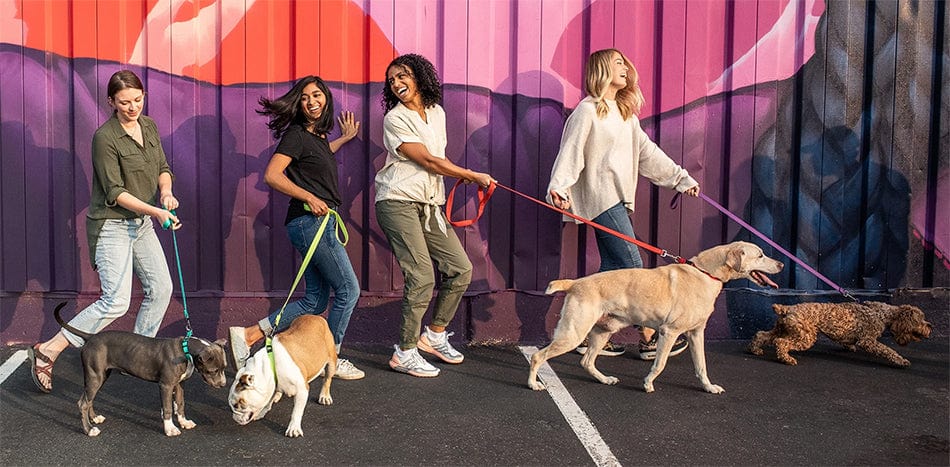Your cart is empty. Let's fix that!


Oh, if only dogs could talk! Conversations would probably consist of treats and neighborhood squirrels. Unfortunately, they can’t speak to us, but they can communicate with us.
Any speech or communication class will tell you that 93% of daily communication is non-verbal. Your body language can say a lot, and the same can be said for dogs. One could say that a dog’s communication is entirely non-verbal. Sure, some barks can dictate a general tone, but usually you can tell if your dog is happy because their tail wags.
How many times has your dog served you those puppy dog eyes and you knew in your heart that he needed a treat ASAP. Puppy dog eyes and wagging tails are just the tip of the non-verbal iceberg. There are so many ways your dog is communicating with you − like that annoying owl from the Duolingo app. We are here to help you understand what exactly she’s saying.
Happiness is one of the most common signs you’ll see and recognize from your dog. It can mean your dog wishes for you to play with him (game time, human). When you see a pup wagging its tail or exposing its tongue, it can mean she’s ready for a game of fetch, wants some quality tummy scratches or are at her ultimate happiest (which probably means they’re with you).
Signs of happiness include:
Aggression and dominance are on the opposite side of the spectrum. A combination of signs can signify that your dog is upset, uncomfortable or wanting to assert dominance. Probably just as obvious as signs of happiness, it’s easy to tell when your dog is in this state. These signs can be triggered by other dogs, unknown visitors or can be a reaction of fear.
Dogs can also let you know when they’re relaxed and request a massage with cucumbers over their eyes. Usually when dogs are relaxed, they are in an approachable mindset, which is great when you’re trying to determine how they feel around new people and environments. The signs are more subtle than the others, but even the most subtle can offer perspective. Keep these in mind when you take your pup to a dog-friendly bar, your office or any new location.
Cats aren’t the only ones who are curious. Dogs are, too, and certain signs in their body language signify their curiosity. Like the body language signs of being relaxed, curiosity has more subtle visuals. Chances are, you’ve regularly interacted with these signs and didn’t even know it. While it’s easy to assume they’re happy, these signs are actually pointing to curiosity. So. do like Wishbone let your dog explore and learn.
Compared to dominance and aggression, signs of fear and worry are a lot harder to see. These visuals are great indicators of your dog’s stress and anxiety levels. Some, including having his tail tucked away, are obvious. Others, such as one raised paw, require a little context. Like G.I. Joe always says, “knowledge is power.” Knowing each can sign can help you understand if your dog is uncomfortable, stressed or anxious. From there, you can determine what about their environment is an active stressor, whether it be people, other animals or the dreaded vacuum.